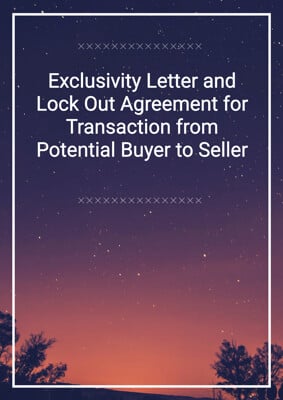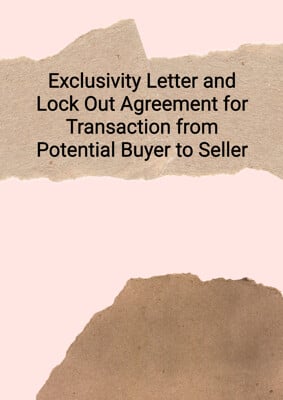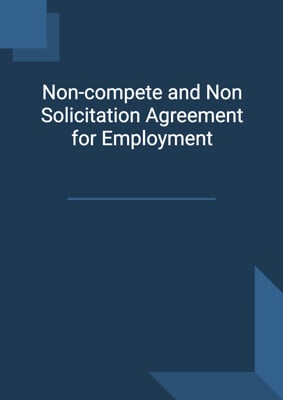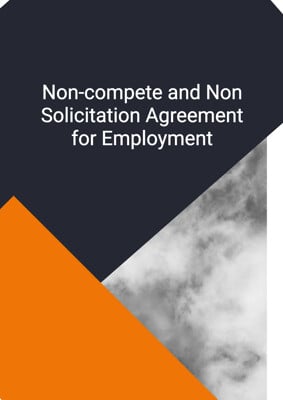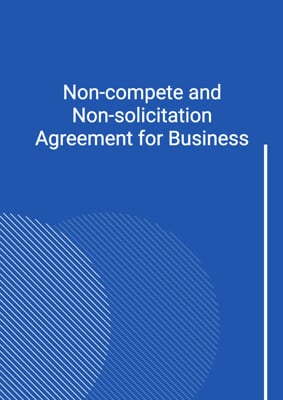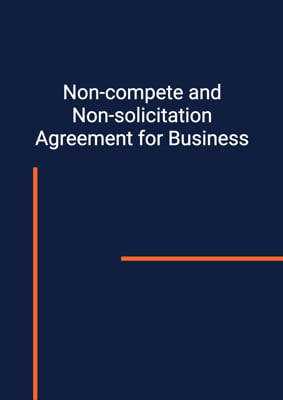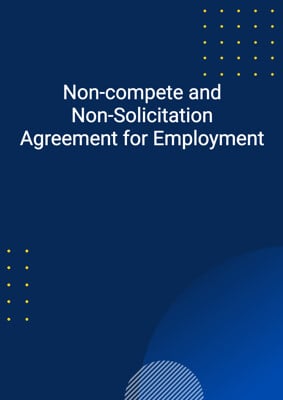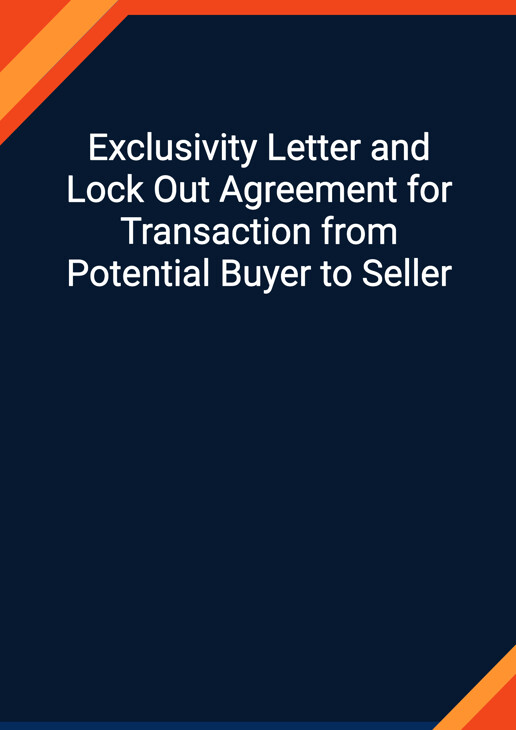
Exclusivity Letter and Lock Out Agreement for Transaction from Potential Buyer to Seller
Seller
This exclusivity letter / lock up agreement is drafted from the perspective of a potential buyer / prospective purchaser in the context of a share or asset acquisition from a seller / vendor. This is drafted in favour of the Seller.
How to Tailor the Document for Your Need?
01
Create Document
Fill in the details of the parties. You can click the "Fill with Member’s Information" button to complete it with information saved to your account.
02
Fill Information
Please fill in any additional information by following the step-by-step guide on the left hand side of the preview document and click the "Next" button.
03
Get Document
When you are done, click the "Get Document" button and you can download the document in Word or PDF format.
04
Review Document
Please get all parties to review the document carefully and make any final modifications to ensure that the details are correct before signing the document.
Document Preview
Document Description
The document titled 'Exclusivity Letter and Lock Out Agreement for Transaction from Potential Buyer to Seller' is an important legal agreement that establishes exclusivity between a potential buyer and a seller during the negotiation and due diligence phase of a potential transaction. The document consists of several sections that provide detailed information and instructions for both parties.
The document begins with a title that clearly identifies its purpose. It then includes a section for the account job company and address, followed by the details of party 1, including their name, address, and contact information. The document is marked as strictly private and confidential.
The main body of the document starts with a greeting to the party 1 contact and introduces the concept of an exclusivity agreement. The content varies depending on whether the potential transaction involves the acquisition of shares or the business and assets of the company.
For a share acquisition, the document outlines the need for an exclusivity agreement before proceeding with further expenditure on due diligence. It specifies that the seller, the company, and its subsidiary undertakings, as well as their respective directors, employees, advisers, agents, or representatives, are prohibited from selling, transferring, encumbering, or disposing of any interest in the shares to anyone other than the potential buyer. The seller is also restricted from soliciting proposals or offers from other parties and from engaging in discussions or negotiations with anyone other than the potential buyer. Additionally, the seller is required to provide information only to the potential buyer and assist in obtaining any necessary regulatory clearances and approvals.
For a business acquisition, the content is similar, but it refers to the potential acquisition of the business and assets instead of shares. The same restrictions and obligations apply to the seller and the company.
The document includes provisions for warranties and representations by the seller, notification of offers or communications received by the seller, and cooperation in obtaining regulatory clearances and approvals. It also addresses the consequences of breaching the agreement, including the potential buyer's right to claim costs and expenses incurred in relation to the potential transaction.
The document concludes with a jurisdiction clause and a provision stating that a person who is not a party to the agreement has no rights under it.
Overall, this document serves as a crucial legal instrument to establish exclusivity and protect the interests of both the potential buyer and the seller during the negotiation and due diligence phase of a potential transaction.
How to use this document?
Guidance for using the 'Exclusivity Letter and Lock Out Agreement for Transaction from Potential Buyer to Seller':
1. Provide the necessary information: Fill in the account job company and address, as well as the details of party 1, including their name, address, and contact information. Ensure accuracy and completeness.
2. Understand the purpose: Familiarize yourself with the purpose of the document, which is to establish exclusivity between the potential buyer and the seller during the negotiation and due diligence phase of a potential transaction.
3. Determine the type of transaction: Identify whether the potential transaction involves the acquisition of shares or the business and assets of the company. This will determine the specific provisions that apply.
4. Read and comprehend the document: Carefully read and understand the entire document, including the specific provisions and restrictions imposed on the seller and the company.
5. Comply with the exclusivity agreement: Ensure that neither the seller, the company, nor any of their subsidiary undertakings, directors, employees, advisers, agents, or representatives engage in any prohibited activities, such as selling interests to parties other than the potential buyer or soliciting proposals from other parties.
6. Provide access to information: Grant the potential buyer and its representatives reasonable access to all relevant information regarding the company and its subsidiary undertakings, as requested in writing.
7. Notify the potential buyer: Promptly notify the potential buyer of any offers, indications of interest, or communications received from other parties regarding the sale of the company or its assets and undertakings.
8. Cooperate in obtaining regulatory clearances and approvals: Take necessary actions and provide assistance as requested by the potential buyer to facilitate obtaining any required regulatory clearances and approvals.
9. Understand the consequences of breach: Be aware that breaching the exclusivity agreement may result in the potential buyer claiming costs and expenses incurred in relation to the potential transaction.
10. Seek legal advice if needed: If you have any doubts or concerns about the document or its implications, consult with a legal professional to ensure compliance and protect your interests.
Note: This guidance provides a general overview and should not be considered as legal advice. It is recommended to consult with a legal professional for specific guidance tailored to your situation.
Not the right document?
Don’t worry, we have thousands of documents for you to choose from:



